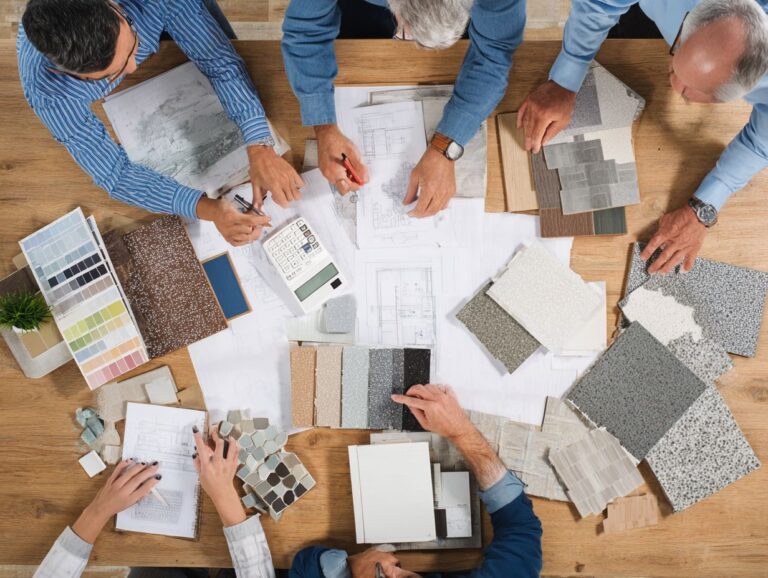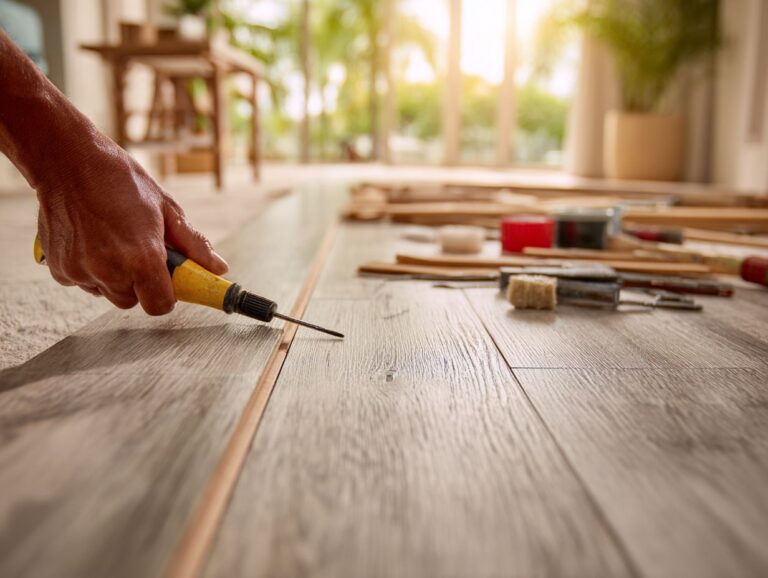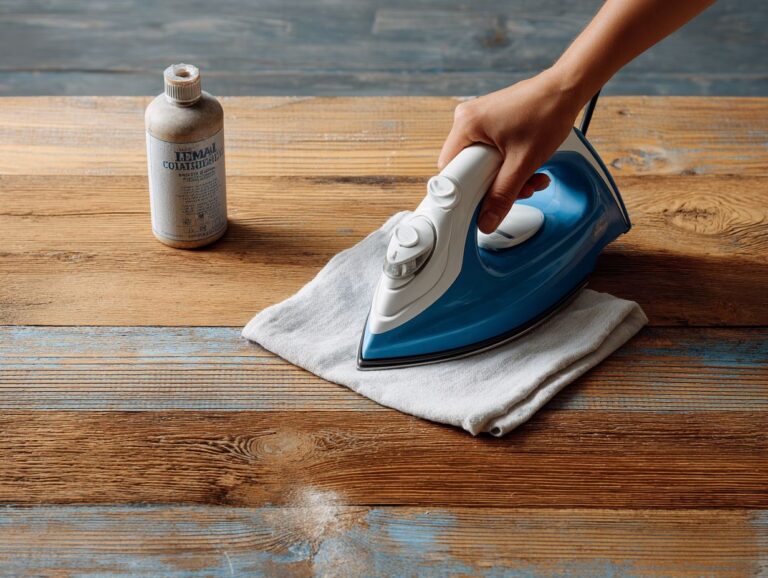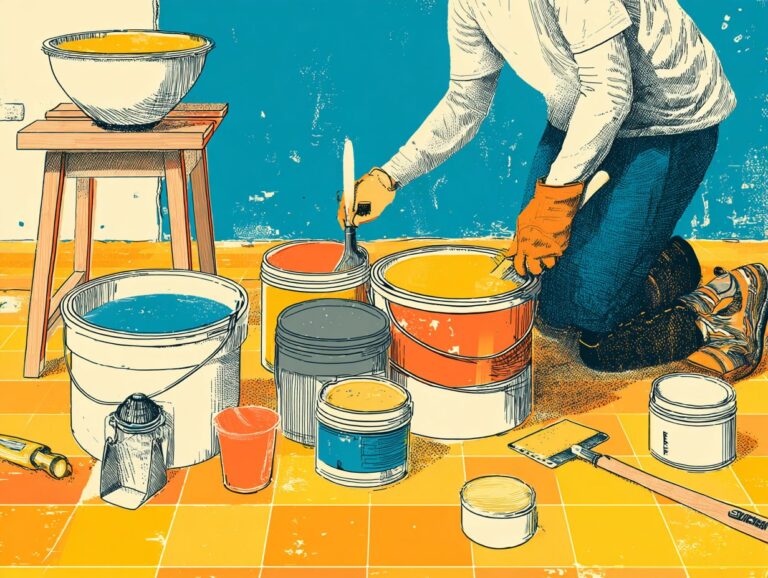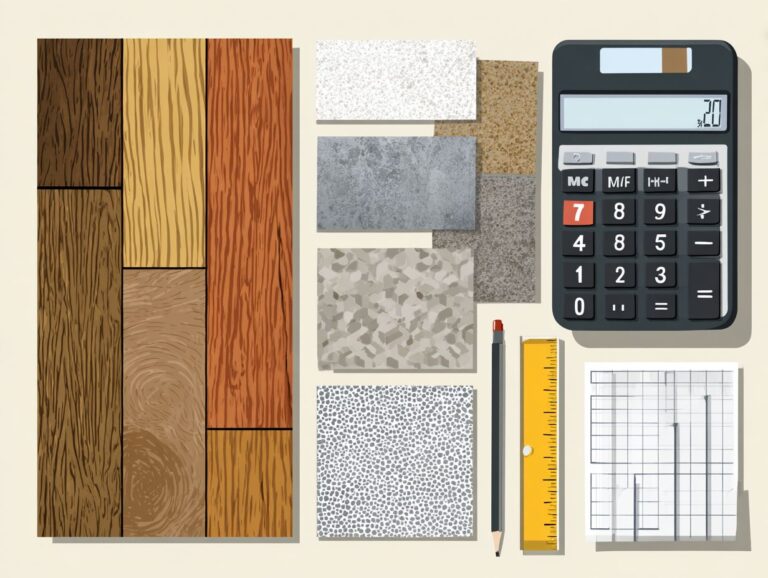Wine Cellar Flooring – Temperature and Humidity Control
For building an ideal wine cellar, the choice of flooring is important for managing temperature and humidity. Choosing the right material improves how things look and helps your cooling unit keep the right temperature. A carefully planned area with a dependable thermostat keeps your wine in the best possible condition. This article looks into how different types of flooring can affect temperature and humidity, offering useful information for wine lovers who want to keep their wine collection in good condition.
Key Takeaways:
Contents
- Types of Flooring Materials
- Impact of Flooring on Temperature Control
- Wine Cellar Environmental Statistics
- Impact of Flooring on Humidity Control
- Best Practices for Wine Cellar Flooring Installation
- Maintenance of Wine Cellar Flooring
- Common Issues and Solutions
- Frequently Asked Questions
- What is the optimal temperature for a wine cellar?
- How does wine cellar flooring affect temperature and humidity control?
- What are the best flooring materials for temperature and humidity control in a wine cellar?
- Can hardwood flooring be used in a wine cellar?
- How important is humidity control in a wine cellar?
- What can happen if the temperature and humidity levels in a wine cellar are not properly controlled?
Importance of Flooring in Wine Cellars
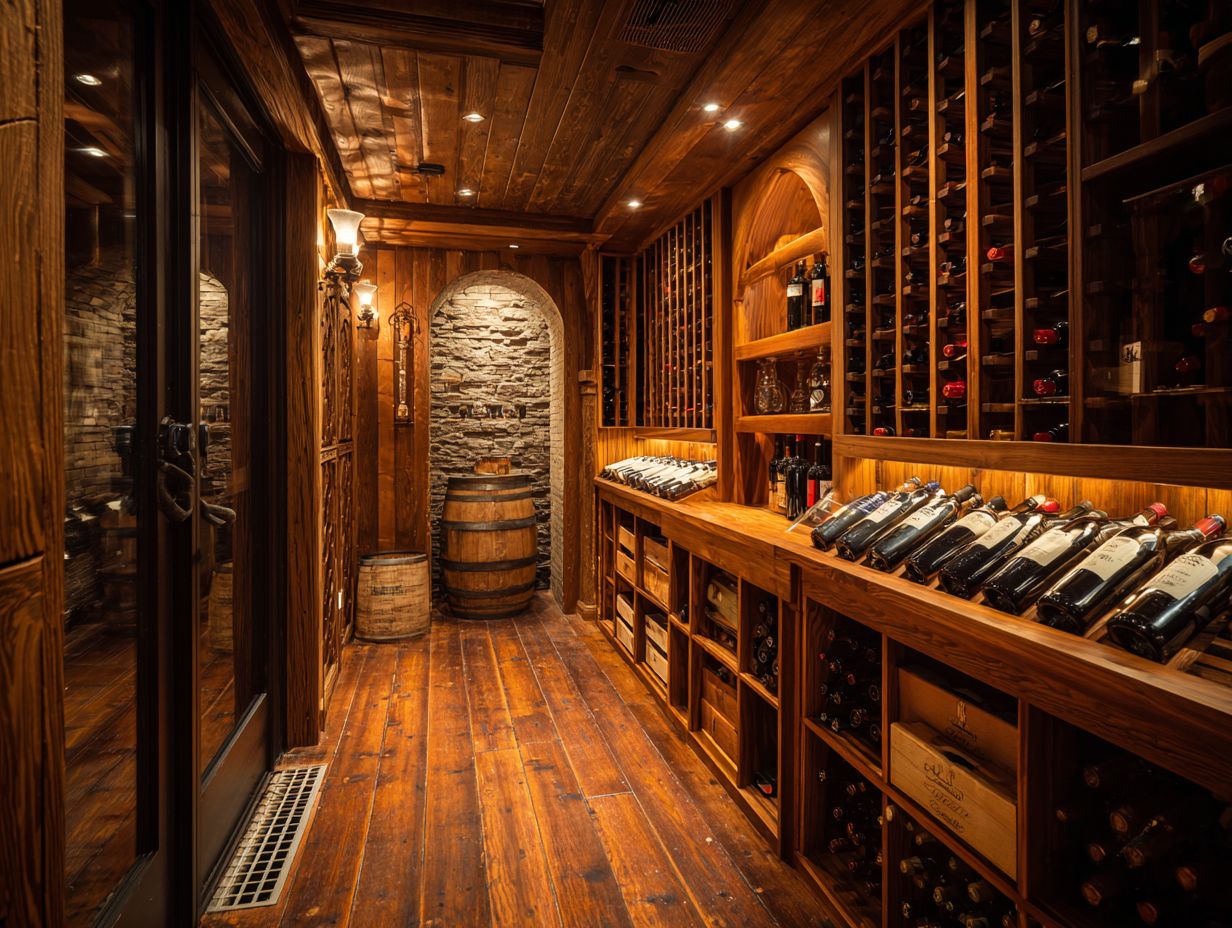
Flooring is important for keeping wine in good condition because it affects temperature and humidity.
Choosing the right flooring material can significantly affect air circulation and cork integrity. For example, wood flooring looks nice but can soak up moisture and might bend, which could interfere with air circulation.
Opting for tile or stone, on the other hand, promotes better airflow and is easier to clean. Consider using insulated subflooring to help regulate temperature fluctuations. Maintaining a consistent temperature between 55 degreesF and 65 degreesF is essential for cork preservation, as fluctuations can lead to spoilage.
Thus, the choice of flooring directly impacts the overall climate control of your wine cellar.
Overview of Temperature and Humidity Control
Effective temperature and humidity control are essential for preserving wine quality, with the ideal temperature range being 45-65 degreesF and humidity levels between 50-70%.
Store wine in a dark, stable environment, ideally inside a wine fridge or cellar that maintains these conditions consistently.
For further protection, use a hygrometer to monitor humidity and an adjustable thermostat for temperature; tools like the La Crosse Technology Wireless Weather Station can provide real-time updates.
Minimize vibration by placing bottles on shelves rather than on the floor. By following these guidelines, you can greatly improve how the wine ages and keep its expected tastes and smells.
Types of Flooring Materials
Choosing the best flooring is important for improving how your wine cellar works and keeping your wine in good condition over time.
Concrete Flooring
Concrete flooring is often used in wine cellars because it is tough and insulates well, helping to control temperature.
Besides keeping temperatures low, concrete flooring helps prevent moisture, which is important for stopping wine from going bad.
Think about this possible drawback: concrete feels chilly, which might make the wine cellar less inviting for extended visits. To mitigate this, you might use area rugs or heating systems when needed.
Applying a seal to concrete helps it resist water and avoids stains, which makes it last longer and look better.
Tile Flooring
Tile flooring is a fashionable and water-resistant choice, perfect for wine cellars where controlling humidity is important.
Plus its moisture resistance, tile flooring is incredibly easy to clean, requiring only a damp mop and mild detergent to maintain its appearance.
Its strength allows it to resist spills from wine or water without getting stained, which is useful in a cellar setting.
Consider adding area rugs or using underfloor heating, as tile can be cold underfoot. For those who want both style and practicality, choosing textured tiles can improve grip while still providing a smooth appearance.
Wood Flooring
Wood flooring gives wine cellars a timeless look, but it’s important to choose wisely so it can handle the environmental conditions.
- To make a suitable choice, consider wood species like oak or maple, known for their durability.
- Apply a high-quality sealant to protect against humidity and moisture, ensuring the longevity of your floors. Opt for engineered wood, which is constructed to resist warping.
- Regular upkeep is important; use a dehumidifier to manage moisture, and clean spills right away to avoid water damage.
By following these guidelines, you can maintain the elegance of wood flooring while protecting it from the unique challenges of a wine cellar.
Vinyl Flooring
Vinyl flooring is an affordable and flexible choice that can match the look of wine cellars and also offer some protection against moisture.
Its waterproof properties are ideal for damp environments like wine cellars, as they prevent mold growth while remaining easy to clean.
Vinyl is comfortable to walk on for extended periods. Available in various designs, vinyl can realistically mimic wood or stone, allowing for aesthetic customization without sacrificing durability.
For instance, luxury vinyl planks can emulate the rich texture of oak, giving your cellar an upscale feel at a fraction of the cost of traditional materials.
Impact of Flooring on Temperature Control
The type of flooring affects how well temperature control systems work in a wine cellar, influencing both energy use and how well the wine is kept.
Wine Cellar Environmental Statistics
Wine Cellar Environmental Statistics
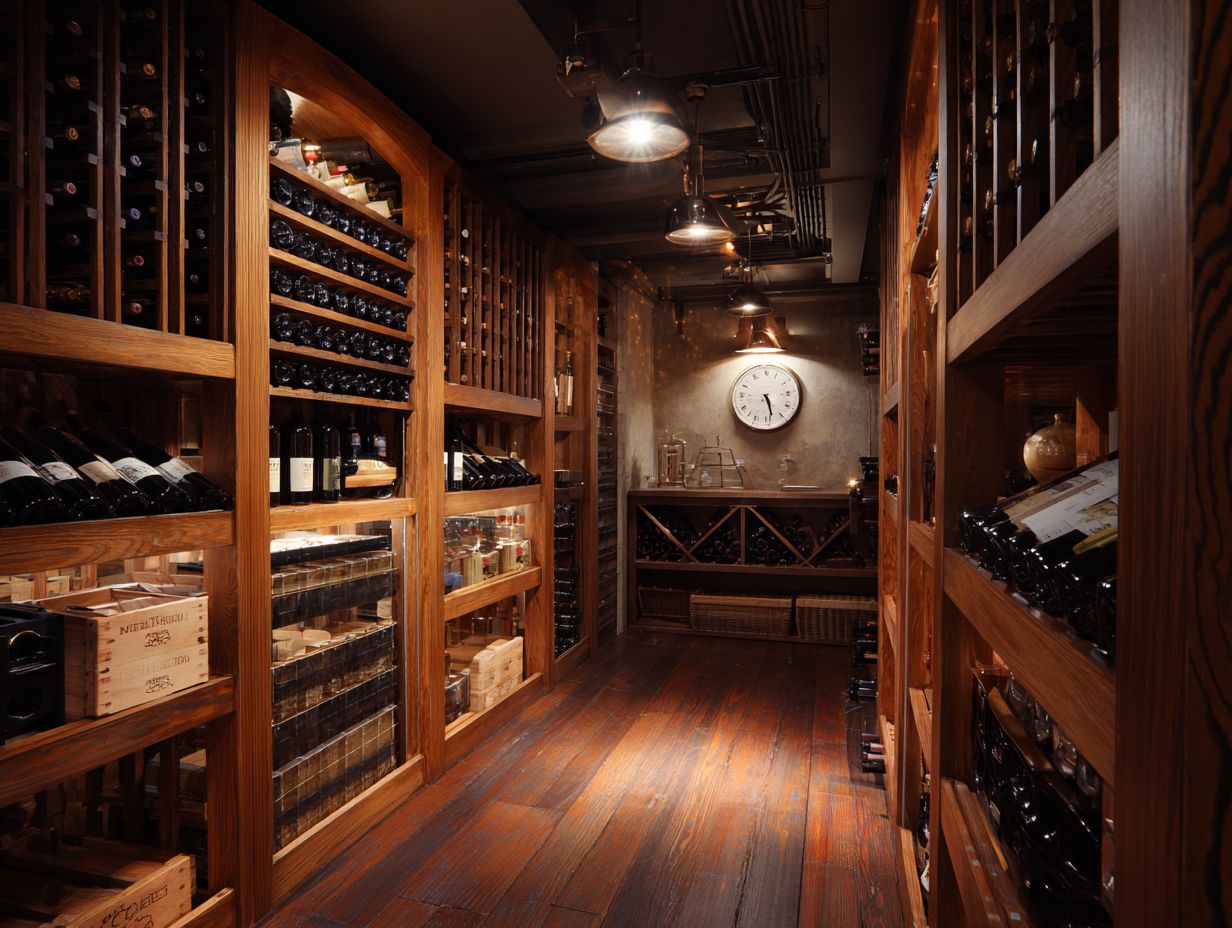
Impact of Climate Change and Market Trends: Climate Change on Wine Storage
Impact of Climate Change and Market Trends: Wine Cellar Cooling System Market
The Wine Cellar Environmental Statistics explain how climate change affects the wine cellar cooling system market, highlighting the need for proper storage conditions and the business potential in the cooling system sector.
Impact of Climate Change and Market Trends focuses on critical factors for wine preservation. Maintaining an ideal wine storage temperature of 55 degreesF and humidity at 65% is essential to prevent spoilage and preserve flavor, which is increasingly challenging as global temperatures rise. Wine cellars must adjust to changing climates, investing in advanced cooling systems to maintain these exact conditions.
The Wine Cellar Cooling System Market demonstrates strong growth potential. With a 2023 market value of $442.6 million, the sector is set to expand to $1.2 billion by 2024 and grow further to $2 billion by 2033. This expansion is supported by a robust compound annual growth rate (CAGR) of 5.2% during the forecast period, peaking at 6.5% between 2026 and 2033. Such growth reflects increasing demand for advanced cooling systems capable of addressing climate change impacts on wine storage.
- As climate change affects traditional wine-producing regions, more homeowners and businesses invest in wine cellar cooling solutions.
- The increase in disposable income and the growing interest in wine collection lead to higher market demand for reliable storage technologies.
The Wine Cellar Environmental Statistics highlight the need for funding in refrigeration systems to protect wine from climate-related dangers. Coupled with market growth prospects, the data points to significant opportunities for businesses specializing in advanced environmental control solutions within wine storage. Adjusting to changes in the environment helps maintain wine quality and supports economic progress in specialized markets.
Insulation Properties
The insulation properties of flooring materials can greatly improve the efficiency of cooling systems, keeping temperatures steady for wine aging.
For optimal wine storage, consider flooring options like cork, which features an R-value of around 2.0, providing effective thermal resistance.
Concrete, with an R-value around 1.0, doesn’t insulate well, but using wool or natural fiber area rugs can help keep the temperature more stable.
Hybrid systems using rigid foam insulation board under the floor improve R-values, which helps keep temperatures steady. Using these materials helps keep wine fresh and lowers energy expenses in the long run.
Heat Retention and Dissipation
Knowing how flooring materials hold or release heat can help wine cellar owners improve their temperature management plans.
For instance, concrete flooring offers excellent thermal mass, absorbing and slowly releasing heat, which can help maintain stable temperatures ideal for aging wine. In contrast, hardwood flooring may allow more heat fluctuation, potentially impacting wine quality.
For optimal conditions, consider using cork tiles, which naturally insulate and help stabilize temperature variations. To gauge effectiveness, use a digital thermometer to monitor floor temperature and adjust your climate control settings accordingly.
Using these specific approaches can greatly improve how wine ages and keep its quality intact.
Impact of Flooring on Humidity Control
Choosing the right flooring helps control humidity in wine cellars and protects wine collections from damage.
Moisture Resistance
Moisture resistance in flooring materials helps prevent mold and mildew, ensuring a safe environment for wine storage.
For optimal wine cellar flooring, consider using:
- Ceramic tiles
- Vinyl planks
- Engineered wood
Ceramic tiles resist water, making them perfect for wet areas.
Vinyl planks mimic wood aesthetics while offering impressive water resistance, suitable for both cozy and modern cellar designs.
Engineered wood features a stable construction that withstands fluctuations in humidity better than traditional solid wood.
By selecting these materials, you maintain lower humidity levels, safeguarding your wine collection from spoilage.
Vapor Barriers
Incorporating vapor barriers under flooring can significantly improve humidity control in wine cellars, safeguarding wine integrity.
To install vapor barriers effectively, first choose a polyethylene sheet with a thickness of at least 6 mils. Lay the barrier over the subfloor before installing your flooring.
Make sure the seams overlap by at least 12 inches and use waterproof tape to block moisture. Keeping the wine cellar well-ventilated is important-try using a dehumidifier set to 50-60% relative humidity.
Regularly look for any signs of moisture to confirm the barriers are working properly.
Best Practices for Wine Cellar Flooring Installation
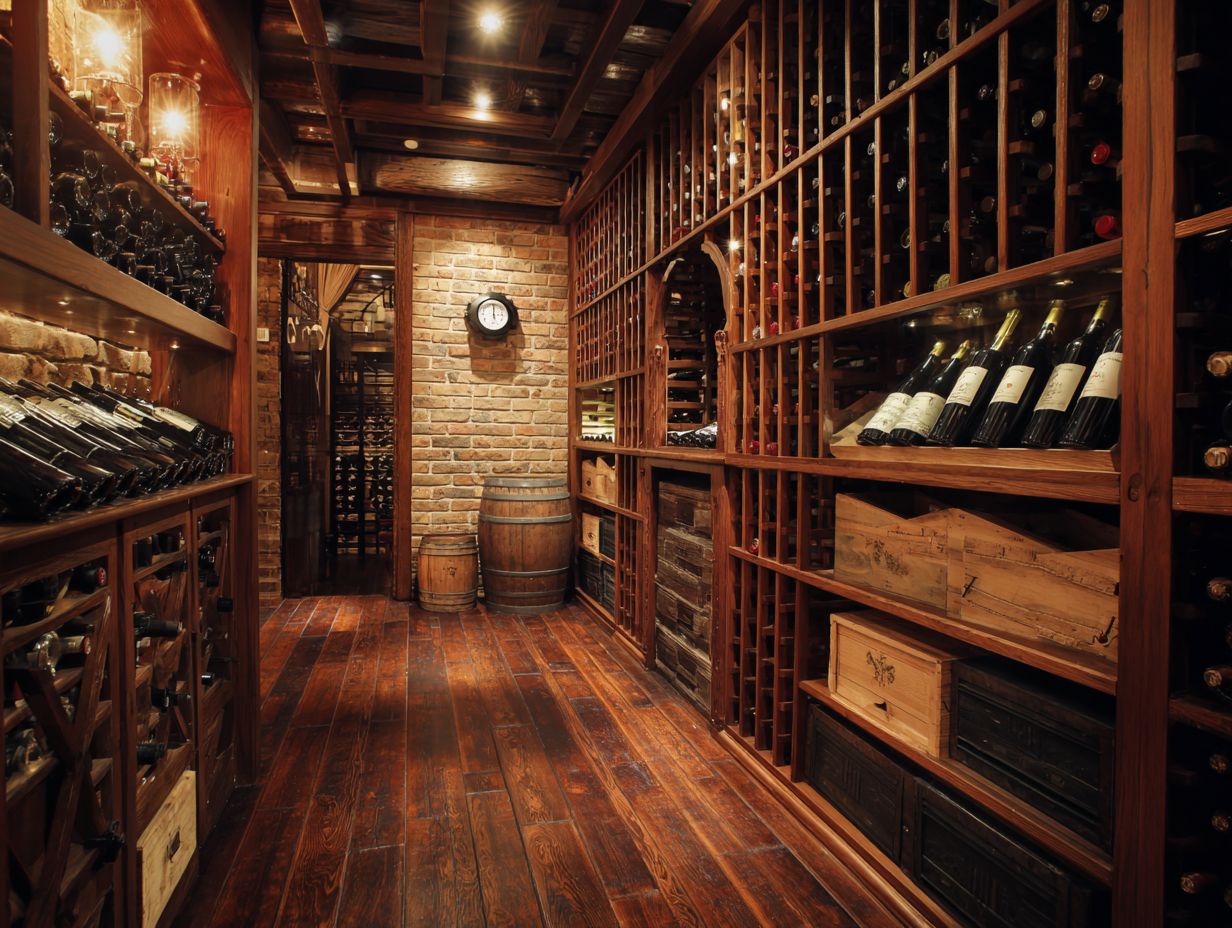
Using proper methods when installing flooring can improve how well a wine cellar works and how long it lasts.
Choosing the Right Material
Selecting the right flooring material involves considering factors like insulation, moisture resistance, and overall aesthetics.
To make an informed decision, start by evaluating your specific needs:
- Insulation Ratings: Look for materials with higher R-values for better temperature control, especially in colder climates.
- Moisture Resistance: Consider vinyl or tile for areas prone to water exposure, like bathrooms or kitchens. For basements, opt for options with soundproofing qualities as well.
- Design Preferences: Choose a style that complements your interior design-hardwood offers warmth, while laminate provides versatility at lower costs. In the end, match your decisions with durability and upkeep needs.
Proper Installation Techniques
Proper installation techniques are critical to ensuring that flooring performs effectively in wine cellars, particularly concerning climate control.
Begin by evening out the subfloor to make a solid base, which stops bending and keeps it long-lasting.
Next, secure a vapor barrier to protect against moisture, ideally using a polyethylene sheet, which will help maintain the desired humidity levels.
Remember to create expansion gaps around the edges to accommodate temperature fluctuations, typically around 1/4 inch.
These actions together improve the durability and function of your flooring, providing the best conditions for storing wine.
Maintenance of Wine Cellar Flooring
Regular maintenance of wine cellar flooring is necessary to keep it in good condition and provide the best environment for storing wine.
Regular Cleaning Methods
Implementing regular cleaning methods helps maintain the appearance and functionality of your wine cellar flooring.
To clean hardwood floors, mop with a pH-neutral cleaner using a slightly wet mop every two weeks to stop mold.
Ceramic tiles require a mixture of vinegar and water weekly for deep cleaning and shine.
To keep your concrete basement clean, scrub it once a month with a mixture of baking soda and water to remove stains and prevent dirt buildup.
Each flooring type benefits from routine vacuuming to remove dust and debris, so check your floors at least once a week.
This patterned method keeps the look and increases the durability of your flooring materials.
Monitoring Temperature and Humidity Levels
Utilizing digital thermometers and humidity sensors can provide real-time data, ensuring your wine cellar maintains optimal conditions.
Checking wine often is necessary to keep its quality.
The SensorPush Wireless Thermometer ($69) checks the temperature and humidity accurately. It notifies your smartphone if the levels move beyond the limits you set.
Using a hygrometer, such as the AcuRite 00613 ($25), helps you keep the right levels. By using these tools, you can easily monitor and adjust settings, helping to prevent spoilage.
Review these readings weekly, or create notifications to stay informed.
Common Issues and Solutions
Recognizing typical problems in wine cellars enables owners to put solutions in place to safeguard their wine collections.
Dealing with Moisture Problems
Fixing moisture issues quickly is essential to avoid damage to your wine cellar and collection.
Start by utilizing mechanical humidifiers to maintain optimal humidity levels, ideally between 50-70%. Regularly check your cellar for leaks or wet spots, especially around pipes and the foundation.
Buy a moisture meter to measure humidity and find damp spots in floors. Consider using a dehumidifier if your environment is consistently humid. Check the insulation and make sure there is good ventilation to control moisture levels well.
These proactive measures can greatly safeguard both the quality and condition of your wine collection.
Temperature Fluctuations
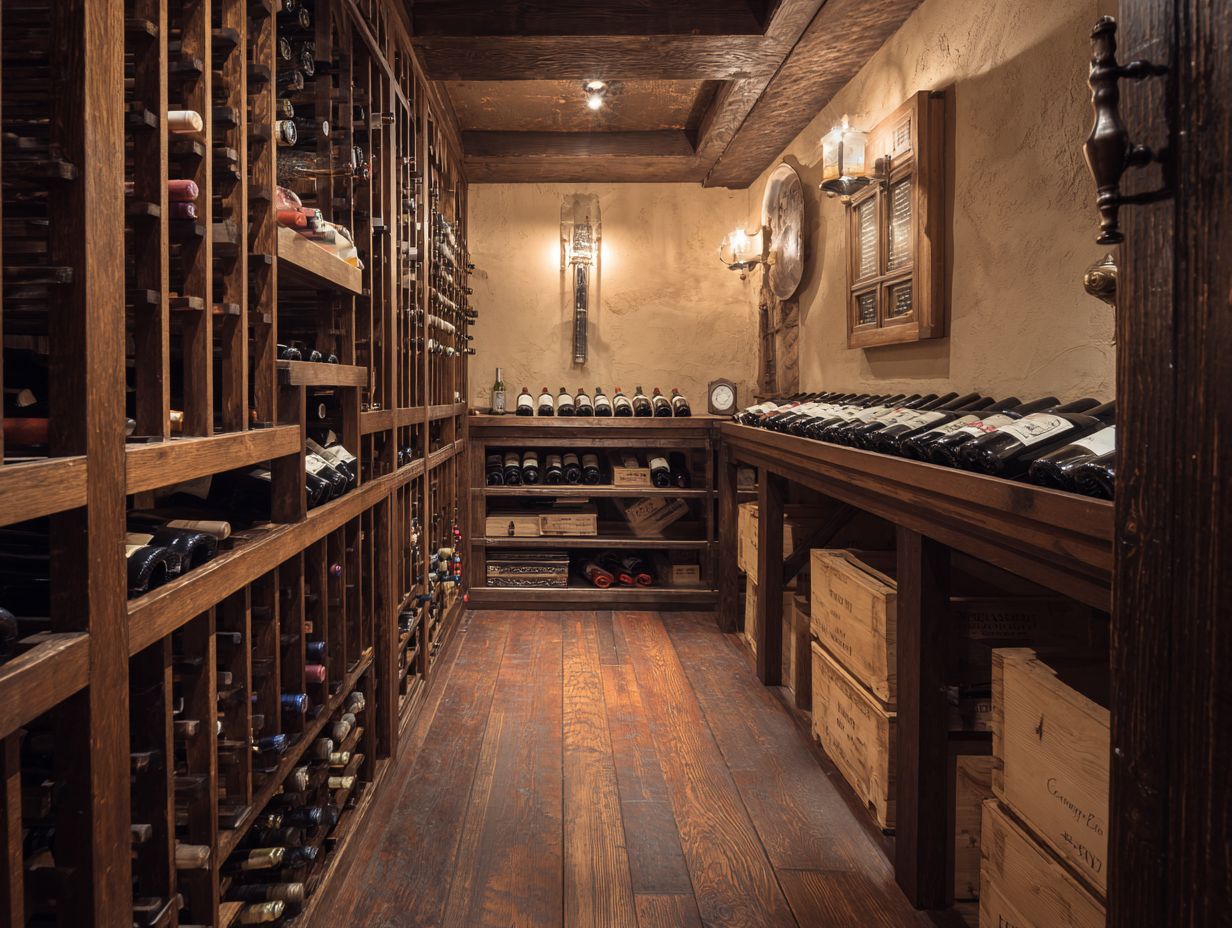
Changes in temperature can greatly affect the quality of wine, so it’s important to keep a consistent climate in the cellar.
Putting in top-notch cooling systems is very important. For example, the WhisperKOOL Phantom 8000 ($2,300) provides reliable temperature management with minimal noise.
Doing regular tasks, like changing filters and inspecting insulation, helps keep systems working correctly. Another effective method is using temperature alarms, like the Ideal Conditions WiFi Sensor ($79), alerting you when your cellar strays from the desired range.
By combining these systems and practices, you can create a stable, protective environment that preserves your wine’s integrity over time.
Final Thoughts on Flooring Choices
Choosing the right flooring improves the look of your wine cellar and is important for wine aging.
Picking the correct materials is important for managing moisture and keeping heat in. Opt for cork flooring, which is both eco-friendly and resistant to mold. Reclaimed wood can provide insulation naturally, but it needs treatment to avoid problems with moisture.
Consider using tiles specifically designed for basements; they provide excellent durability and prevent water damage. For added protection, implement a vapor barrier under your flooring. Each option offers unique advantages, so weigh factors like climate, budget, and desired style to create an optimal environment for your wine collection.
Frequently Asked Questions
What is the optimal temperature for a wine cellar?
The optimal temperature for a wine cellar is between 55-58 degrees Fahrenheit. This temperature range makes sure the wine ages correctly and stays fresh without spoiling or changing.
How does wine cellar flooring affect temperature and humidity control?
The flooring in a wine cellar is important for keeping the right temperature and humidity. The type of flooring used can affect the insulation and moisture retention of the cellar, which directly impacts the temperature and humidity.
What are the best flooring materials for temperature and humidity control in a wine cellar?
Natural stone, ceramic tiles, and concrete are great choices for wine cellar flooring. These materials provide excellent insulation and moisture resistance, helping to maintain stable temperature and humidity levels in the cellar.
Can hardwood flooring be used in a wine cellar?
Hardwood flooring is not recommended for wine cellars as it is prone to warping and expanding in humid environments. This can affect the temperature and humidity control of the cellar and potentially damage the wine.
How important is humidity control in a wine cellar?
Controlling humidity in a wine cellar is important because it stops corks from drying out, which can let air into the bottles. The ideal humidity level for a wine cellar is between 50-70%, which can be achieved through proper flooring and insulation.
What can happen if the temperature and humidity levels in a wine cellar are not properly controlled?
If temperature and humidity levels are not regulated in a wine cellar, it can lead to premature aging, spoilage, or even the growth of mold and bacteria. This can greatly affect the quality and taste of the wine and potentially ruin the entire collection.
